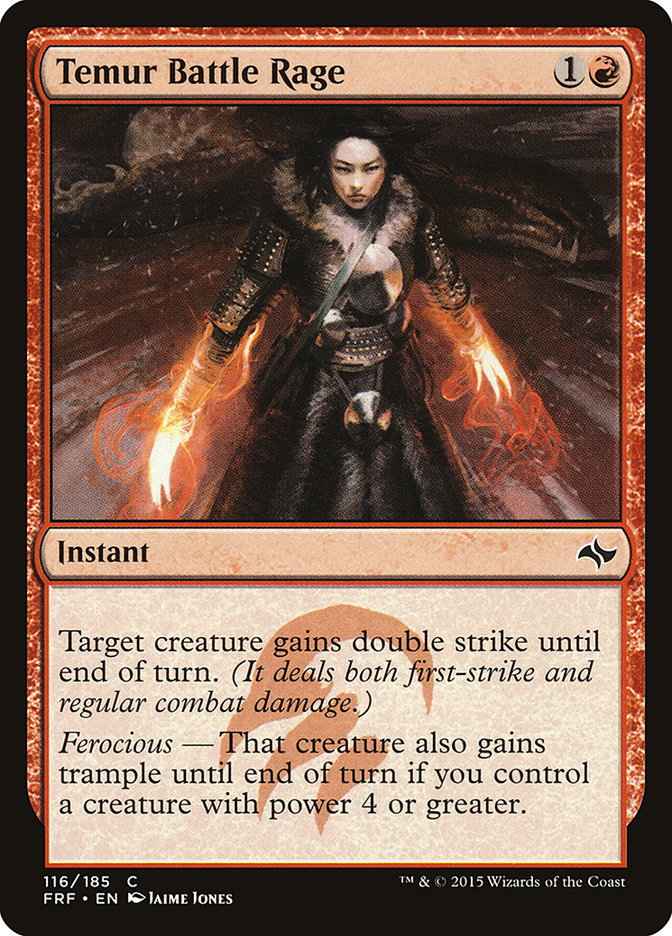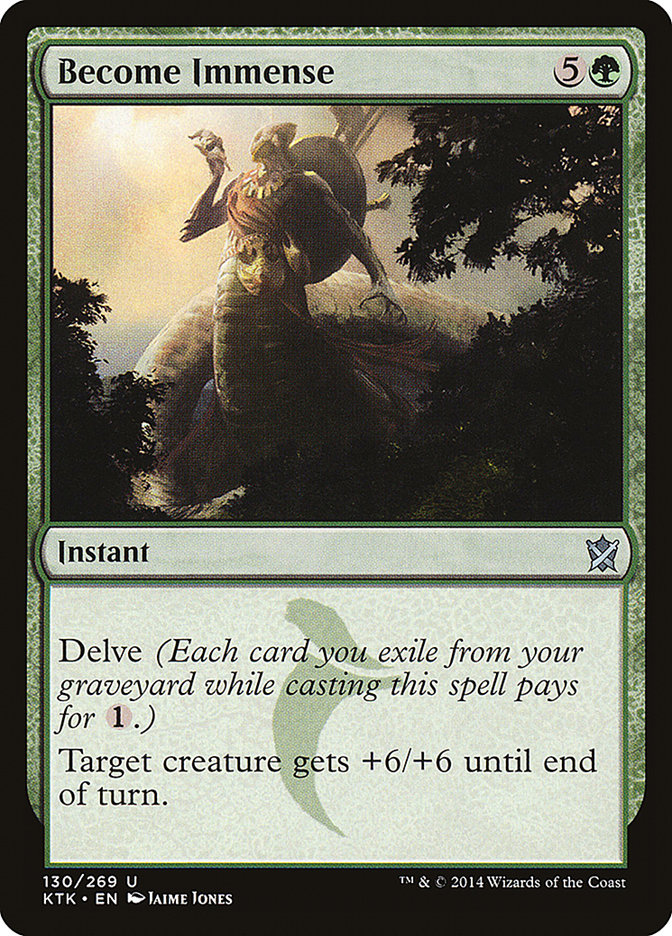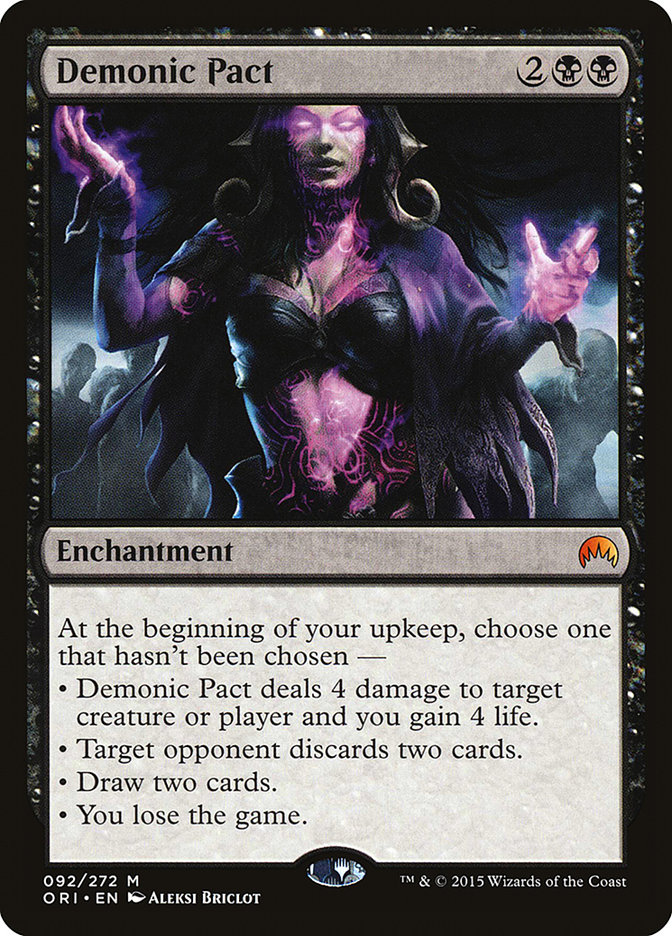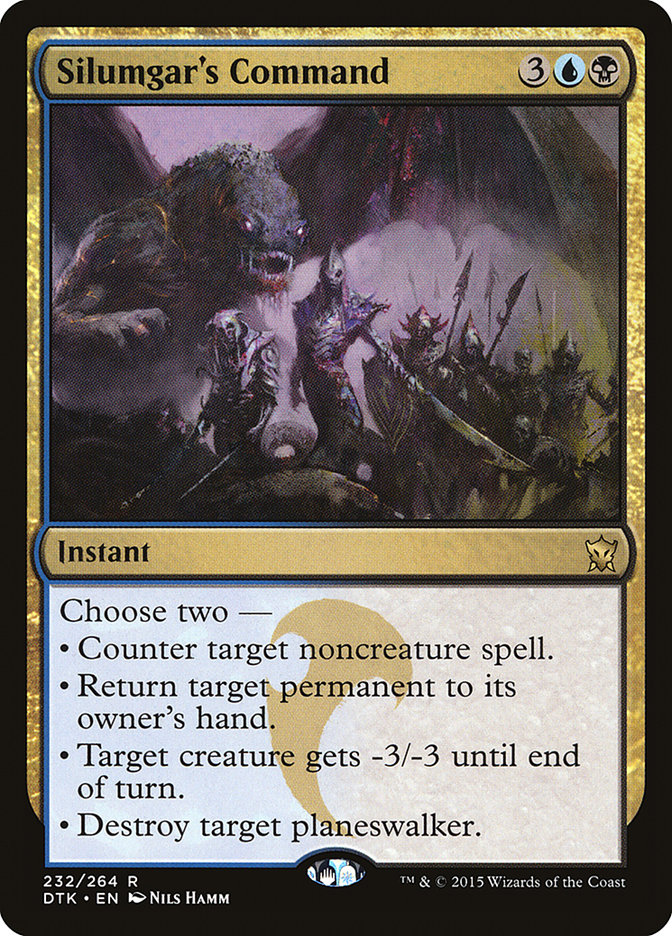Milwaukee.
For a lot of us in the Wisconsin Magic scene, the end of this year was something that we’d been excited about for a very long time. A Grand Prix was coming
to Magic Mecca, Madison. But not only that, Wisconsin was getting a Pro Tour.
I can tell you, for a great many Magic players around here, the buzz in the air was palpable.
By the end of the weekend, you could count the excitement in so many local players’ faces when they saw one Wisconsin native on the stage during the Top 8
announcements. “Milwaukee’s Owen” was on the lips of so many, to the amusement of the 21+ crowd (or, probably more accurately, the 35+ crowd). I clapped
for everyone, but I clapped hardest for Owen, if only out of pure Wisconsin pride.
I would like to tell you that I think I should have strolled across the stage with him, but the truth is, while I would have liked to have joined him, I
don’t think I was quite as ready for this Pro Tour to make that be the case.
It wasn’t that I didn’t have a great deck, but it was some of the little things that led into it.
I’m a huge fan of a ton of preparation going into an event. Some people are completely comfortable with doing something right before an event, armed
entirely with the knowledge they’ve gleaned in the work leading into that event, their own creativity, and the natural talent in their deckbuilding. Two
Madison people I can think of who both fit the bill in this regard are Sam Black and Brian Kowal. Both of these guys aren’t only comfortable playing a deck
that they put together the night before a major event, but they’ve both done it. Often.
I’ve never been comfortable with that.
It’s possible that I once was, but I honestly can’t recall ever running with a last minute brew. I don’t feel comfortable with not having a good sense of
how to play and sideboard a deck. If I’m not familiar with what to do, specifically, in each of the major matchups, I know that I can do a fairly
decent job, but I don’t want to make the kinds of unforced errors I think I’m prone to in these situations.
Let’s make a simple, hypothetical example to illustrate this. For the Standard around PT M15, my favorite two decks for the event were U/W Control and
Burn, in that order. After a ton of testing the matchup, it was clear that U/W Control would win the vast majority of matches. However, despite
the fact that it won the vast majority of these matches, it was by the narrowest of margins. Something as simple as playing the wrong land (or taking two
from a land to make a Sphinx’s Revelation better) could make a winning game a loss. It was such a close matchup that in numerous times that I played the
match, I felt as though I was on a tight wire going between high rises, and mishandling any gust of wind would send me falling down to the pavement below.
At Grand Prix Chicago last year, I faced
Burn five times, and didn’t lose, but I did almost lose three of those times.
I feel pretty confident that if I didn’t have a ton of practice in, I wouldn’t have done what I needed to do in that tournament.
Coming back to this year and this tournament, I definitely felt like I was a little short on that practice.
My initial work was largely on the following decks: Eldrazi Ramp, Abzan Control, Sultai Pact, Jeskai Black, Atarka Red, R/G Landfall, Mardu Goggles, Jeskai
Tokens, Esper Dragons, and Mardu Green. For this Pro Tour, I was working with an old-school connection: the New York City/Madison connection that has been
bridged many times over, but nearly always includes Zvi Mowshowitz. In addition to Zvi, I worked with Mike Flores, Alan Comer, Gaudenis Vidugiris, Bryan
Gottlieb, Stephen Neal, and Aaron Lewis, as well as several unqualified Magic folks, most notably my good friend Ronny Serio.
There were a lot of ideas that were being passed between everyone, but one of the key issues that I felt was happening in the prep had everything to do
with mana. After #SCGATL, for example, I felt like it was very important to reckon with this deck archetype and others like it:
Creatures (16)
Planeswalkers (1)
Lands (26)
Spells (17)

Creatures (14)
Planeswalkers (4)
Lands (25)
Spells (17)

The part of this deck that was so important to me was the mana. The previous week, we’d seen the mana from GerryT’s Five-Color Bring to Light deck showing
us how far that it could be pushed. Looking at the mana for this deck, it just suddenly seemed to me that I hadn’t done nearly enough to have my multicolor
decks have the best possible mana. Even within the archetype of Jeskai Black, Todd and David had strong differences between their two builds.
I knew that one of my front-running decks, Mardu Green, was really pushing the envelope on its mana, and I still wasn’t sure about it. Even looking at tons
of manabases and trying people’s decks out, I was just continually finding myself uncertain of what a ‘proper’ manabase should look like. The majority of
the team was settling into R/G Landfall, and while I absolutely respected the deck, I felt more than a little uncomfortable with playing that deck when I
expected the Pro Tour to have practiced against Temur Battle Rage + Become Immense for weeks.
One of the things that had gotten my attention, though, was just how good many decks were at suppressing aggression. They needed to work hard to do it, but
they absolutely could. My Mardu deck was packing three copies of Radiant Flames, and it could consistently knock a Mantis Rider out of the sky on turn 3.
Ronny’s control deck was doing the same thing.
Flores sent me a message out of the blue asking me to reconsider looking at his old U/B Demonic Pact deck that he’d sent earlier. It really took me back.
I’d lost a lot to Demonic Pact back when I was playing my old U/B Control deck. I’d gotten a lot of respect for the deck, and I was just really impressed
with the kind of pressure that it put on an opponent to make choices, which oftentimes were very much of a ‘damned-if-you-do/damned-if-you-don’t’ nature.
I’d put together two very early builds of the deck before we’d really had a good sense of what mana even looked like, and I thought there was something to
them. One of these decks was Sultai and one was Esper.
You lose the game. Well, we don’t want that to happen!
In thinking about Pact, I imagined that the core of the deck had to be reasonable, whatever the color combination was, so long as you had correct mana.
However, one of the big problems I had: time was running short. In the days leading into Grand Prix Madison, I’d gotten sick, and I’d spent most of the
early part of that week in bed. It was only on the very Tuesday before the Pro Tour that I had a preliminary list that at all felt like a real deck.
This is pretty damned last minute for me.
I mixed together four decks that actually had had reasonable success in the past to try to shortcut the lack of playtesting. One of them was Jeff Kruchow’s
Esper Dragons list from #SCGINDY:
Creatures (6)
Planeswalkers (1)
Lands (27)
Spells (26)

There was quite a bit I liked about this list. My October 13th list ended up using a lot of inspiration from Jeff in terms of his mana and his exile theme,
and bringing it altogether for the needs of a Demonic Pact list as opposed to a Dragon list. This initial idea ended up being only four spells different
than my maindeck for the Pro Tour.
Here is Esper Demons:
Planeswalkers (3)
Lands (27)
Spells (30)

I went 7-3 in Constructed.
If you recall my comment before about preparation, there were two match-losing instances that I can think about with the deck which could have been avoided
with more time playing the deck. I’m not really one to tilt, but I certainly did think about them throughout the weekend.
The first one was versus my longtime Magic friend Jamie Parke. Jamie was on Jeskai Black, one of the matchups I very much looked forward to, and one of the
reasons I had selected the deck. We were in game 3, I had a Demonic Pact out that would kill me on the next turn, six cards in hand, and he was tapped out
with a Sarkhan, the Dragonspeaker in play. I cast Despise, got rid of his last threat, and saw that he was basically out of gas, especially since I was at
10 life. I cast Dark Petition, confident that I’d win the game.
Unfortunately, I’d accidentally sideboarded out the Silumgar’s Command.
I don’t recall having done so. I imagine that I pulled it out because it was expensive and he was packing Dispel and Disdainful Stroke, not to mention
Duress. Had I thought about it more, I would have undone siding them out, because despite being expensive, Silumgar’s Command was specifically there for
opponents with planeswalkers. Without access to Silumgar’s Command, I had to find a card that could only get rid of my Pact, and let the Sarkhan
hit me yet another turn.
I ended up getting rid of Sarkhan, but Jamie had exactly enough to kill me.
I can only blame myself for this; more time practicing, and I’m sure I wouldn’t have made that choice.
Similarly, in another match, my opponent had no cards in hand and no threats in play, and I had a healthy life total and a Shambling Vent.
Empty-handed I cast Demonic Pact.
This was a very bad idea.
Later that weekend, it would be more clear to me why: in essence, empty-handed, I was saying “I will kill my opponent or this Pact before I die, and I’ll
do it off of the top of my library.” What I should have been thinking was that I could die to my own Pact, which is, in fact, what I did, when in the next
five draws I didn’t find an answer to my own Pact, and I could only knock my opponent to two.
Practice doesn’t make perfect, but it is actually quite important.
A lot of people asked me if the deck is actually any good. I think it is quite good and a great choice if you’re expecting a lot of Jeskai Black and
various Den Protector decks. It’s not so good if you’re expecting a lot of Atarka’s Command.
Here’s a quick breakdown of the deck:
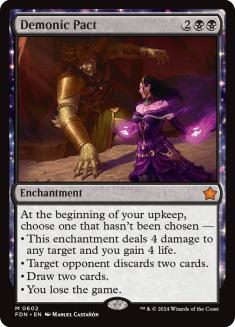
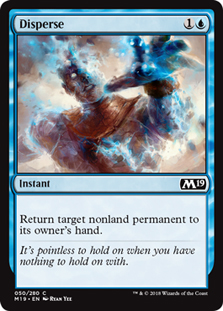
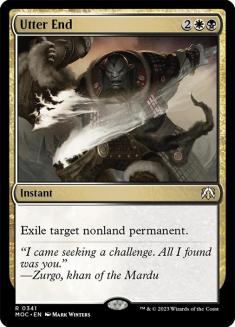
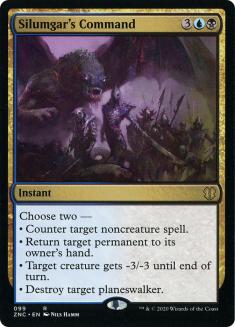


Here, we have the core of the deck. These are the four copies of Demonic Pact and the many ways to get rid of the card. Disperse is the weakest of these,
but being the cheapest, it is also an incredibly important part of it. Aside from that, Disperse can also be used in combination with the discard elements
of Demonic Pact to permanently get rid of a threat if you are bold enough to be so aggressive with the card.
All of these cards have the ability to deal with very nearly any potential problem card, and non-land permanents are often easily handled. Even simply
bouncing a permanent can be incredibly good when you are dealing with so much raw card advantage.
Of course, Demonic Pact, in many ways, feels like a slow-moving Cruel Ultimatum for four mana. While clearly not as backbreaking as that card, we’re also
living in a time of less powerful spells. If you’re drawing cards, killing creatures and gaining life, and making your opponent discard, you’re really
whittling them down, and if you’re still alive after a Pact has been doing some work, the likelihood is that your opponent feels pretty exhausted. Throw in
another Pact, and you have an opponent that is likely nearly out of any meaningful threat, empty-handed, and hoping that they’ll find salvation on the top
of their library.
All of this is, of course, on the understanding that your own Pact hasn’t killed you. So don’t let that happen!
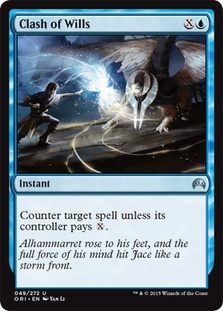
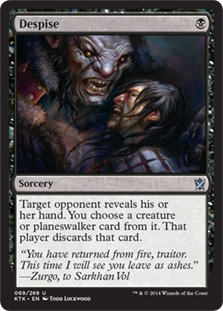
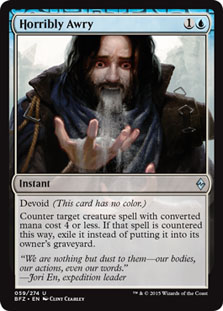
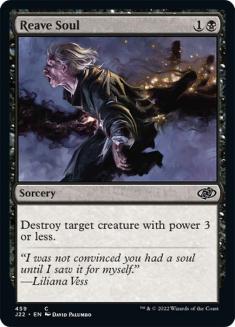
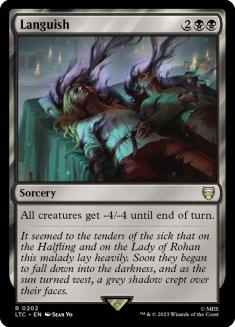
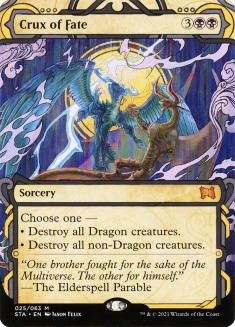

Keeping your opponent off of their gameplan is incredibly important. For most decks right now, that means knocking their creatures around. For some decks,
having just a little bit of counterspells can really help in the first game.
All of these categories do have a little bit of overlap. All of the ways to deal with a Demonic Pact can also be made use of to take down some permanents.
Silumgar’s Command can act as an expensive Negate.
This overlap actually ends up making the deck feel as though it is always whirring, even when it isn’t doing anything with a Pact at all. This overlap
continues into the next area of the deck as well:

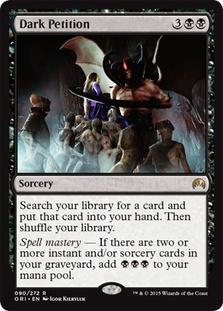
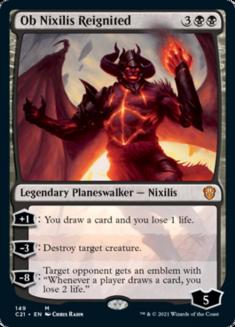

Here you have the glue for the deck, which just keeps you filled with answers to your own Pact and to your opponent’s cards just in general. Ob Nixilis can
enter the battlefield like the world’s best Nekrataal and then stick around like a better Phyrexian Arena.
Dark Petition and Dig Through Time fight each other just a little bit. Managing your graveyard so that you can still have spell mastery can be important,
since without it, Dark Petition is just so very, very expensive. In practice thus far, there hasn’t been too much of a problem for me in managing this so
long as I’m just thinking about it.
The sideboard is a generalist sideboard, designed with the idea in mind that there simply wasn’t much time to figure out the specifics. Most of the cards
are incredibly self explanatory (Dispel versus instants, Horribly Awry versus creature-based decks of casting cost four or less, Ultimate Price versus
mono-colored creatures, etc.). There are a few things that are unusual.
Jace in the sideboard is the big one.
After the Pro Tour, Patrick Chapin told me about a conversation he had with Erik Lauer, The Mad Genius of Magic turned R&D honcho, about sideboarded
Jace, Vryn’s Prodigy. Getting value out of an unanswered Jace is much easier if they sideboard out answers, but, as Patrick and Erik discussed, it meant
giving up the potential game 1 advantage.
I was just fine with this. I played an incredible amount of games with Jace where he just died. Without any other creatures at all in my deck, he wasn’t
even clearing the way for a Dragonlord Ojutai or something else. Without any other cheap creatures, there really didn’t seem to be enough value in even
playing Ojutai’s Command.
I got the inspiration from Jeff Kruchow’s Esper Dragons list, and especially this match:
Jace, Vryn’s Prodigy was a great card against those decks that weren’t particularly well equipped to fight it. I was already working on how to sideboard
against a Dromoka’s Command deck, and I’d determined that it mostly wasn’t worth continuing to be a Demonic Pact deck. Jace, Vryn’s Prodigy was a great
part of filling out the package of cards that you might bring in if you were going to shift gears and become, in essence, an “Esper Planeswalkers” deck.
Joining him could be other general control cards, the extra Ob Nixilis, and whatever other weapons made the most sense for the particular matchup.
Many people have asked me what I’d do to change the deck, and I have to say that the question requires a complicated answer.
First, I need to ask myself this: does the deck actually need to be a Demonic Pact deck? Between the Esper Control deck from The Pantheon and the Esper
Control deck from Team Ultra PRO, I think there is a good argument to be made that you don’t need to be playing a card that literally says “You lose the
game” on it. The specific makeup of that kind of deck is something that I’m still working on.
On the other hand, Jeskai Black and G/W Megamorph look to be two of the big players in the new Standard, and I really like how well the deck plays against
these decks. Basically Demonic Pact really punishes any deck that spends a lot of time thinking about creatures or any deck that only puts onto the
battlefield a very moderate beatdown.
In this second case, I know there are things I’d want to do. They include answering the following questions:
– Is four Disperse too many?
– Would the deck be better as a three Demonic Pact deck? If so, would it run two Dark Petition?
– How good is Despise? How many should I be playing?
– How can I fit in 2-3 Negate in the sideboard?
– How can I fit in the third Tasigur, the Golden Fang in the sideboard?
I’m still working on the answers. If I find out, you can be sure I’ll let you know.
For now, my next many weeks are spoken for. My next major Magic event is likely to be Grand Prix Minneapolis. I only have nine Pro Points right now, but
I’m hoping to succeed in my new take on #TheQuest4Platinum this year. I’m beginning the
year with that goal in mind, and I’m going to see about making it happen. A new year has begun for the Pro Tour, and I’m striving to do better than I ever
have before.

